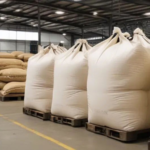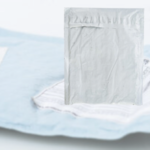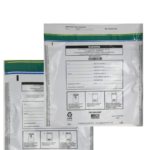
Six Ways to Detect Counterfeit Currency
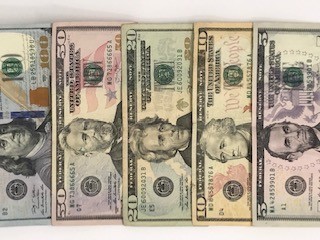
How to Spot a Counterfeit Bill – Six Ways
Small businesses often fall prey to counterfeit currency being passed off to their cashiers, and being a small business, this can definitely hurt your bottom line. Counterfeiters are getting smarter and smarter when it comes to producing fake currency that can look amazingly legitimate. Below are six different ways to check if currency is real and how to spot fake money. While some decent counterfeiters can duplicate one or two of these security features, it would be nearly impossible to be able to mimic all of the enhanced security features today.
- Raised Printing – Run your fingers and fingernails over the printing on the bill, if it is legitimate, it should not feel completely smooth. There should be some noticeable ridges along the printing.
- Color Shifting Ink – All currency is printed with green ink on the back of the bill, and black ink is used on the faces on the front of the bill. However, on bills for denominations of $10 and higher, the ink changes colors. Where is the color shifting ink found on money? You can find it on the denomination in the righthand bottom corner of the bill. This ink appears a metallic copper color when tilted up and a darker matte color when laid flat. The newer $100 bills also have an inkwell with color shifting ink of the liberty bell inside of the inkwell, and the newer $10, $20 and $50 bills have metallic inked freedom symbols of a copper torch, gold eagle with a crest and silver star respectively.
- Clear and Precise Printing/Micro – Printing – US Currency is made using die-cut printing plates capable of producing very fine, crisp, detailed lines. Using a magnifying glass look along the borders of all denominations except the one-dollar bill and discover crystal clear micro- print that you never even knew was there!
- Red & Blue Threads – US Currency is composed of 75% cotton and 25% linen. Real currency has red and blue fibers that are woven into the fabric of the bill. Some counterfeiters print red and blue lines on their bills, but if you look closely, you can tell this is only done on the surface and not actually woven in.
- Watermarks- All denominations over a dollar have watermarks printed to the right of the bill. These watermarks must only be visible when held up to the light. You should not be able to see them unless light is showing through the bill, if you can this is the sign of a fake.Most of the watermarks are replicas of the person’s face that appears on the bill, it should never be a different person’s face, or this would be a dead giveaway that the bill is not real. The newer $5 bill however, has two different watermarks. To the left of Lincoln’s face are three descending 5’s going down the bill, and to the right of Lincoln’s face is a large watermark of a number 5.
- Security Threads – All US currency other than one-dollar bills contain a security thread that runs vertically through the bill in a designated spot depending on the denomination. There is writing on the security thread that reads “USA” and then corresponding number that matches the denomination of the bill.When placed under UV or black light each denominations thread glows up a different color. See below for the location and color of each denomination’s security thread.
$5 – located on the right side and glows blue
$10 – located on the right side and glows orange
$20 – located on the far-left side and glows green
$50 – located on the right side in the middle and glows yellow
$100 – located on the left side and glows pink
Besides the naked eye, there are detection tools out there to try and eliminate accepting counterfeit currency. There are counterfeit pens that show up as a gold or yellow line on real bills but will turn black when used on a fake. However, with counterfeiters getting smarter, many now use chemicals that the make the pens unable to detect the bills are not real, therefore, rendering them useless. Other detection tools out there range in price from around $30 up to $300.Some of these are Ultraviolet lamps, watermark lamps, magnetic ink scanners and multi-test scanners. While these tools are an investment, they will more than pay for themselves if you are able to catch just a few counterfeit bills with them!
Check out these links for more helpful information on how to spot counterfeit bills, and what to do if you are given one.
Share:
Get A Quick Quote
Social Media
Most Popular
Categories
Tags
Related Posts
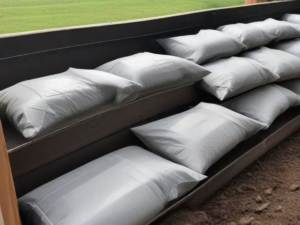
The Ultimate Guide to Organizing and Storing Soil Bags
If you’re a gardening enthusiast, you know how important it is to have good-quality soil for your plants to thrive. Soil bags, whether they be
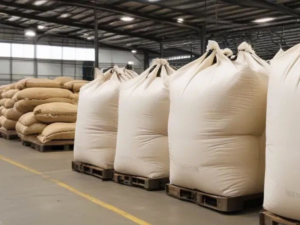
A Guide to Utilizing Bulk Bags in Agriculture: Making Farming Effortless
Bulk bags or flexible intermediate bulk containers (FIBCs) are one of the important tools used in farming practices. These large, sturdy bags offer a range

Clear Poly Mailer Bags: The Ultimate Shipping Upgrade
Shipping is a challenging aspect in the world of e-commerce. Some products like glass items, electronics, and artwork are more fragile than others. As a

